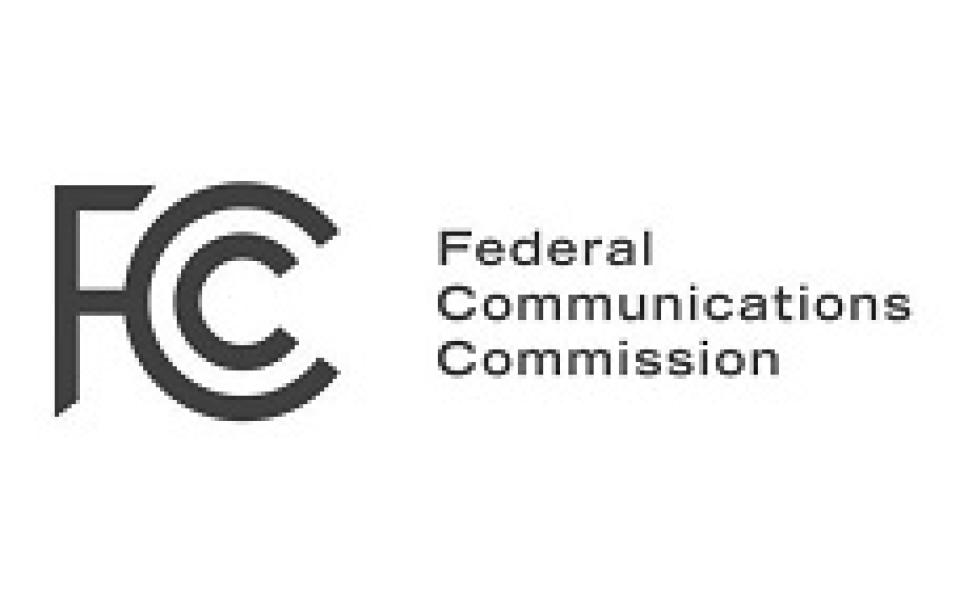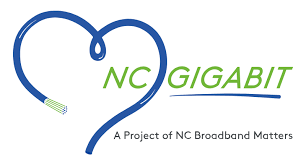
Fast, affordable Internet access for all.

Another year of the Broadband Communities annual summit is behind us, and it’s worth revisiting the most salient moments from the panels that touched on the wealth and variety of issues related to community broadband regulation, financing, and expansion today and in the future. We weren’t able to make it to every panel, but read on for the highlights.
Last Mile Infrastructure and the Limits of CARES Funding
The first day of the program saw some heavyweight sessions from Coalition for Local Internet Choice (CLIC) on last mile digital infrastructure. For communities at all stages of broadband exploration and investment — whether exploring an initial feasibility study, putting together an RFP, or already planning for the future by laying conduit as part of other projects — partnerships dominated the discussion, with timing and debt also serving as common themes.
ILSR’s Christopher Mitchel helped kick off the conference by moderating the first panel in the Rural/Editor's Choice track, and was joined by Peggy Schaffer from Maine's Broadband Office (ConnectME), Monica Webb from Internet Service Provider (ISP) Ting, and Roger Timmerman, CEO of Utah middle-mile network UTOPIA Fiber.
The group discussed the open access models to start, and the benefits that could be realized from two- or three-layer systems. UTOPIA Fiber has seen some explosive growth and spearheaded significant innovation recently as it continues to provide wholesale service to ISPs that want to deliver retail service on the network. Ting, which recently signed on to be one of two providers on SiFi Network’s first FiberCity in Fullerton, California, also acts as an example of what can happen when we break away from thinking about infrastructure investment and Internet access as one-entity-doing-it-all.
In the city of Fullerton, California (pop. 140,000), privately owned infrastructure builder and operator SiFi Networks has turned on the first section of what will be a city-wide, open access Fiber-to-the-Home network. The project makes Fullerton SiFi’s first FiberCity — a privately built, financed, and operated open access network it plans to duplicate in more cities across the country in the future. When complete next fall, the Fullerton FiberCity network will pass every home and business in the city, with the company's subsidiary, SiFi Networks Operations, selling wholesaling capacity to as many Internet Service Providers (ISPs) as want to enter the market.
A Different Approach

SiFi’s FiberCity model remains somewhat unique in the United States, and is much more common in Europe and Asia. CEO Ben Bawtree-Johnson attributes their success to cracking the economic code for private investment in open access information infrastructure, which has seen more attention in recent years as investors and fund managers have seen opportunities. “[O]ur vision really is to create as many last-mile fiber optic networks as we can across the USA in a long term sustainable fashion,” Bawtree-Jobson remarked on an episode of the podcast last fall. “[W]e're all about long term, dry, low yielding, risk mitigated investments, so everything we do is based around 30-year plus type investments.”
Milwaukee County, Wisconsin, is currently experiencing firsthand the consequences of the Federal Communications Commission’s (FCC's) 2018 preemption of local governments’ authority to regulate 5G infrastructure in their cities. With its initial handful of applications for new small cell transmitters just submitted to the county board by Verizon under the new rules, local officials are grappling with a host of limitations — including fee caps, shorter timing windows, and right of way exemptions — which outline clearly a problem more and more communities will face in the coming months and years.
Less Say, Less Money
We pointed out when the FCC handed down the order in the fall of 2018 that it represented a significant giveaway to wireless carriers while placing additional restrictions and financial burdens on local regulators, most of which are county boards and city departments. Among the most troublesome of the order’s provisions are new 60- and 90-day approval windows for the installation of infrastructure on existing and new wireless facilities, a limitation to annual fee scales for small cell sites set between $100-250, a right now enjoyed by wireless providers to place infrastructure on municipally owned poles and traffic lights, and a rule that says if regulating authorities don’t get to an application within 60 days it automatically becomes approved. The 9th U.S. Circuit Court of Appeals upheld the fee cap in a ruling last Wednesday.


This week on the Community Broadband Bits podcast Christopher speaks with Deborah Simpier, CEO of Althea. Althea offers software and tools for communities looking to build and maintain sustainable networks in their own communities.
Althea works by installing custom firmware on the routers of its member-operators, connecting them all together in a fixed wireless, ad hoc network that dynamically responds to the supply and demand of individual users. That network is then linked to a commercial-grade backhaul, and users pay each other for bandwidth while configuring their own connection preferences and needs. Althea’s innovative software and staff help manage the network in real-time. The result is a decentralized, flexible, privacy-focused community of devices. Althea exists in more that three dozen communities around the United States, Canada, the Caribbean, and Africa.
Deborah reflects on how she came to the broadband space, and the origins of the first Althea network. Christopher and Deborah discuss what it means to play a central role in empowering communities to help create their own sustainable networks, and watching people put in Internet infrastructure themselves and take ownership. One example is Enfield, North Carolina, a state with some of the most onerous broadband restrictions which have resulted in poor connectivity options for that community.
For related coverage of broadband efforts in North Carolina or mesh networks in action, search those tags at MuniNets.org.
This show is 32 minutes long and can be played on this page or via Apple Podcasts or the tool of your choice using this feed.
Transcript below.
We want your feedback and suggestions for the show-please e-mail us or leave a comment below.
Listen to other episodes here or view all episodes in our index. See other podcasts from the Institute for Local Self-Reliance here.
Thanks to Arne Huseby for the music. The song is Warm Duck Shuffle and is licensed under a Creative Commons Attribution (3.0) license.
I have been tracking from afar local grassroots efforts in Cambridge, Massachusetts, to start a municipal broadband network for years. I've visited them locally and spoken to various people from citizens to elected officials about the different options. The following are my observations. I'm not trying to channel their thoughts on how to move forward.
Cambridge is a high-tech city with nearly ubiquitous coverage from Comcast, delivering more or less the same services they offer to millions of homes — which is too say mostly reliable and high-cost Internet access (that will be still higher cost next year and the next after that). In the case of Comcast, it comes with crippled upload speeds compared to fast download capacity. Customer service is . . . well, you do your best to never have to use it.
But with MIT and Harvard within its confines, many in Cambridge are well aware that Internet access can get so much better and not be mediated by a company willing to spend millions in D.C. to preserve its right to set up tollbooths for certain kinds of content if they so choose.
However, Cambridge is remarkably similar to Palo Alto, which is also home to high tech households that mostly use Comcast cable and sometimes have the option of AT&T fiber. And in both instances, there is a strong case for some kind of municipal network that would create more local Internet choice. Both appear to have significant support in the community for a public option. But both also have city staff that have decided to prevent any meaningful investment.
They have run into the challenge that Seattle also wrestled with. These high profile cities have refused to consider creative, incremental, and targeted efforts. Instead, they have focused almost entirely on the costs of duplicating Chattanooga or Wilson, where the community built the entire citywide at once with debt-financed capital.
In Cambridge, the city council is rebelling after having been stymied by a city manager that has successful resisted efforts to study municipal broadband for years.

We're starting off the new year with episode four of the new podcast project we're working on with nonprofit NC Broadband Matters. The organization focuses on finding ways to bringing ubiquitous broadband coverage to local communities to residents and businesses in North Carolina. The podcast series, titled "Why NC Broadband Matters," explores broadband and related issues in North Carolina.
As we look forward to a new year, we're also looking back with this week's guest, Jane Smith Patterson, a Partner with Broadband Catalysts. Jane has a deep love for North Carolina and a deep interest in science and technology. Throughout her life, she has put those two interests together to help North Carolinians advance human and civil rights, education and learning, and to advance the presence of high speed connectivity across the state.
 Jane's decades of experience at the federal, state, and local levels make her the go-to person to provide content for this episode, "North Carolina's unique broadband history and lessons for moving forward." She and Christopher discuss how the state has become a leader in science and technology, including the state's restrictive law limiting local authority. Lastly, Jane makes recommendations for ways to bring high-quality Internet access to the rural areas where people are still struggling to connect. The conversation offers insight into North Carolina's triumphs and challenges in the effort to lift up its citizens.
Jane's decades of experience at the federal, state, and local levels make her the go-to person to provide content for this episode, "North Carolina's unique broadband history and lessons for moving forward." She and Christopher discuss how the state has become a leader in science and technology, including the state's restrictive law limiting local authority. Lastly, Jane makes recommendations for ways to bring high-quality Internet access to the rural areas where people are still struggling to connect. The conversation offers insight into North Carolina's triumphs and challenges in the effort to lift up its citizens.
We want your feedback and suggestions for the show-please e-mail us or leave a comment below.
This show is 63 minutes long and can be played on this page or via Apple Podcasts or the tool of your choice using this feed, at the Community Broadband Bits page, or at the NC Broadband Matters page. We encourage you to check out other "Why NC Broadband Matters" content at the podcast feed so you don't miss future bonus content that may not appear in the Community Broadband Bits Podcast feed.
Transcript below.
We want your feedback and suggestions for the show-please e-mail us or leave a comment below.
Listen to other episodes here or view all episodes in our index. See other podcasts from the Institute for Local Self-Reliance here.
Thanks to Shane Ivers for the Music: What's The Angle? by Shane Ivers -
Image of Downtown Wilmington, North Carolina, as seen from across the Cape Fear River by Jason W. Smith [CC BY-SA 3.0]
The Blandin Broadband Communities (BBC) program from the Blandin Foundation has been helping local cities, counties, tribes, and other self-identified communities of interest or place take steps to meet technology goals since 2013. The foundation is once again seeking participant communities and is accepting applications to be part of the 2020-2021 program cohort.
Download the BBC Application Instructions here for more information on how to apply to the program. The application deadline is January 24th.
Helping Communities Meet Their Goals
Bernadine Joselyn, Director of Public Policy and Engagement at the Blandin Foundation alerted us to the search for participating communities. In an email, Bernadine stated:
This program emphasizes broadband adoption and use in rural communities through the provision of leadership and project development facilitation services as well as project funding of up to $75,000. Project examples include public Wi-Fi access, business technology assessment and training, workforce training, online community and business marketing, online government services and other community generated projects. Communities are required to create a steering team to oversee the effort over the 18-24 month program period
For communities that have quality broadband services in place, this program can showcase the value of broadband network deployment. For communities working to improve their broadband networks, Blandin Broadband Communities can provide a platform for building community consensus that enhanced broadband networks are critical to a community’s future.
Working for Other Communities Across Minnesota
Innovation today requires a high-speed Internet connection, and in rural areas, that often means a fiber optic network owned by a local government, a cooperative, or a local business. It’s no surprise then that when the Rural Innovation Initiative was looking for rural communities with good connectivity and an interest in innovation-based economic development, it turned to cities served by locally owned broadband networks. Out of the nine communities initially selected to participate in the Rural Innovation Initiative, more than half have a local Internet access provider instead of a national ISP.
Initiative Bridges Rural Opportunity Gap
The Rural Innovation Initiative is a new program created by the Center on Rural Innovation (CORI) and Rural Innovation Strategies, Inc. (RISI), with funding and support from the U.S. Economic Development Administration (EDA). Launched at the end of last year, the initiative works to “bridge the opportunity gap in rural America by helping communities build the capacity to create resilient, innovation-based jobs.”
For the first part of 2019, CORI and RISI selected nine cities and community partners to take part in what they describe as a “fast-paced technical assistance sprint,” which will help participants develop innovation hubs as an economic development strategy. The initiative will also prepare communities to apply for federal funding opportunities, such as EDA’s Regional Innovation Strategies program. More than 100 rural communities from 40 states applied for the program, which is free for participants. Selection criteria included location in a census-designated rural county, access to New Market Tax Credits and Opportunity Zones, partnerships with higher education and local nonprofits, and existing high-speed broadband networks — Fiber-to-the-Home (FTTH) in particular.
CORI and RISI, in partnership with EDA, will offer further technical assistance to communities through the Rural Innovation Initiative after this initial project complete. To learn more, watch a webinar about the program from December 2018.
Senator Janice Bowling has become a broadband hero in rural Tennessee and on the pages of MuniNetworks.org. Year after year, she introduces legislation aimed at expanding local authority to allow communities the ability to improve connectivity. She’s back this year with several bills aimed at expanding fiber in rural areas.
Seeking Better Connectivity…That’s All
Like Bowling’s past legislation, related bills SB 489, SB 490, and SB 494 grant municipal electric utilities the authority “to provide telecommunications service, including broadband service” and specifies that they can do so beyond their electric service area. This change in the current law would allow places like her own community of Tullahoma to expand to serve neighboring towns. There is no fiscal impact from the Senator’s bills.
Bowling has seen firsthand how access to fiber optic infrastructure, such as Tullahoma’s LightTUBe, lifts economic development, improves educational opportunities, and helps a local community reduce costs. The city has thrived since investing in the network in 2009, while many of the communities that have had to rely on subpar service from the larger incumbents have limped along.
SB 489 also extends authority for municipalities to collaboration for telecommunications and broadband service, to ease any uncertainty about public-private partnerships.

Brent Christensen, Chief Operating Officer of Christensen Communications, came into our Minneapolis office to sit down and have a chat with Christopher this week for podcast 346. Their interview comes a short time after Christopher and several other Institute for Local Self-Reliance staff took a tour of the Christensen Communications facilities.
Brent has an additional role as President and CEO of the Minnesota Telecom Alliance (MTA) a group that advances policies encouraging expansion of broadband connectivity. Brent describes some of the ways MTA has helped Minnesota and local leaders establish policies to help private sector telecom companies bring better connectivity to local communities, especially in rural areas. He and Christopher spend time discussing Minnesota’s Border to Border Broadband Program and why they think it’s been a success.
The conversation also covers the permitting process, railroads, and partnerships, in addition to other topics. Brent and Christopher discuss some suggestions for communities that are interested in working with local companies, based on Brent’s years in the industry and the knowledge he’s gained from his family’s business.
This show is 36 minutes long and can be played on this page or via Apple Podcasts or the tool of your choice using this feed.
Transcript below.
We want your feedback and suggestions for the show-please e-mail us or leave a comment below.
Listen to other episodes here or view all episodes in our index. See other podcasts from the Institute for Local Self-Reliance here.
Thanks to Arne Huseby for the music. The song is Warm Duck Shuffle and is licensed under a Creative Commons Attribution (3.0) license.